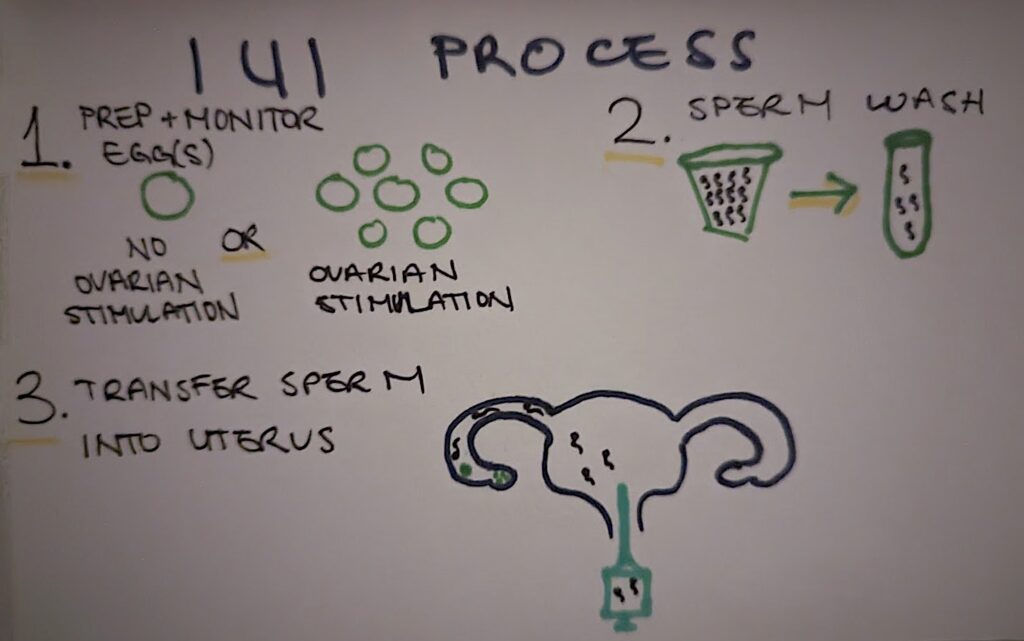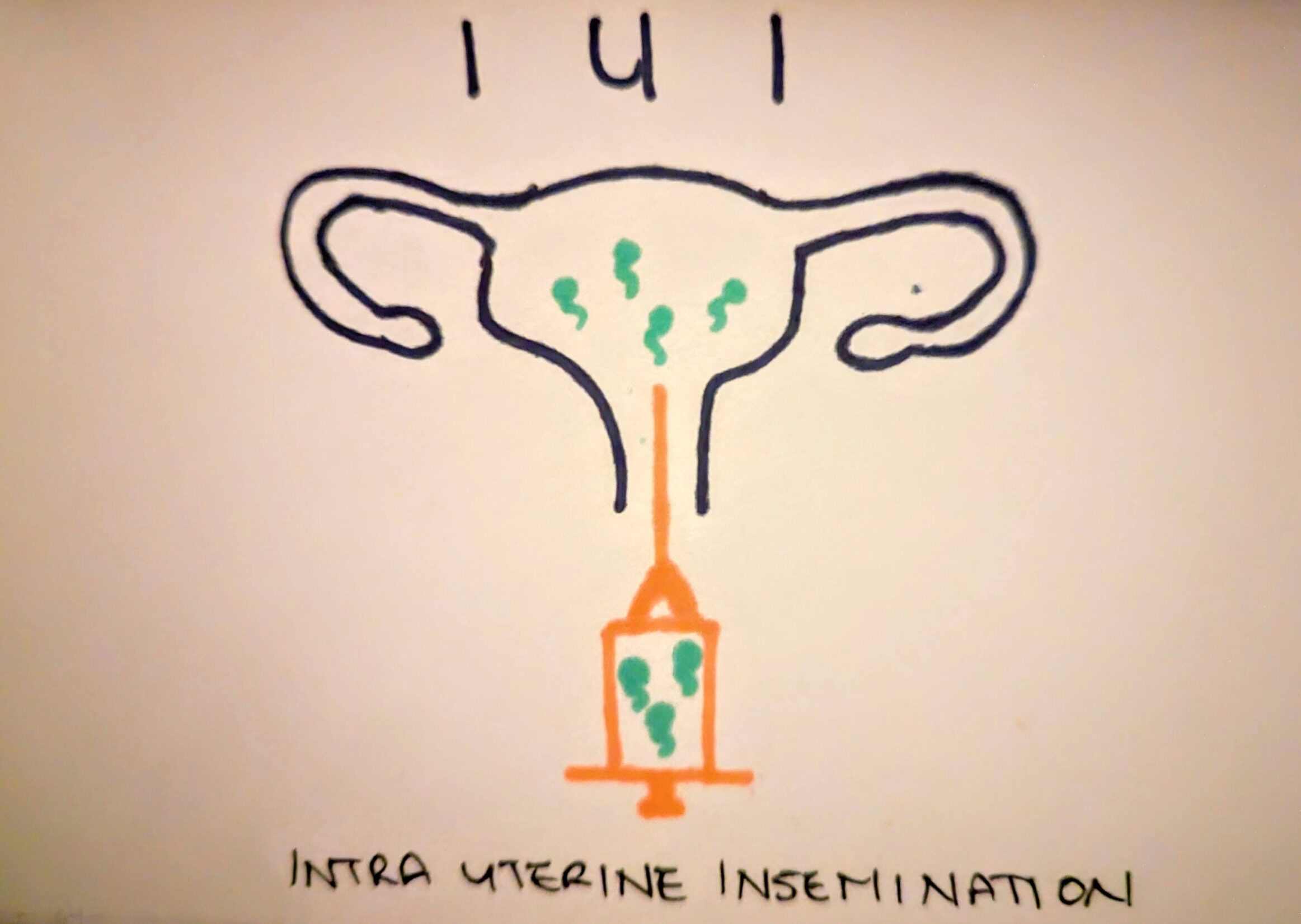Intrauterine insemination is a fertility treatment wherein sperm is inserted into a woman’s uterus in the hopes that an increased number of sperm enter the fallopian tube where fertilization will hopefully take place. This treatment is less invasive than its IVF counterpart and for this reason, along with its relatively low cost, is often the first course of treatment for those with fertility struggles.
how does the treatment work
The IUI treatment begins on day 2 of your cycle. At this stage you will be prescribed injections to increase the number of eggs to be released from their ovaries. There are IUI cycles that take place without injections however those electing not to do injections will have only the number of eggs released naturally during that cycle to produce an embryo, which is generally 1 egg. The chances for success may therefore be decreased.
The clinic will then monitor the quantity and growth of the eggs throughout your cycle. At the opportune moment (i.e. when the maximum number of eggs have reached the ideal maturity) the clinic will administer a trigger shot (HCG shot) which stimulates ovulation within 24 – 36 hours. This is key because they want to know the most optimal time to insert the sperm in order for them to be waiting for when the eggs travel down the fallopian tubes.
You will then undergo the insemination part of the IUI treatment. This is where the doctor will insert the prepared seman into your uterus for hopeful fertilization with your eggs. I like to refer to this procedure as the Turkey Baster procedure because that’s what they used to do before fertility clinics existed.
The sperm which is used for insemination is previously washed and assessed in order to only put forth the best of the best into your uterus. Before it’s time at the spa, the sperm can either be frozen or fresh.
My first IUI I did with frozen sperm as my husband was out of the country in Hawaii playing Rugby for Canada. If it wasn’t that cool believe me I would have made him stick around. This IUI attempt and the several we did afterwards did not work for us however we did have 1 successful IUI years later which resulted in the birth of our beautiful and spicy girl, Ricki.
The procedure itself takes only a few minutes and then you are free to go.
From there you will need to wait 2 weeks until you can go back to the clinic to get your bloodwork to check for pregnancy. (a million good lucks to you!!!)

Who IUI is best suited for:
Not all suffering from fertility struggles are candidates for IUI. The procedure is best suited for cases with mild male factor infertility (IUI is not beneficial for severe male factor infertility), unexplained infertility (where yours truly is a member), cervical mucus issues, same sex marriage or use of donor sperm.
Cost (in Canada):
There are several costs rolled up into 1 IUI cycle. Here is a list of approximate costs in Canada.
- Injectables: $500 – $1,500
- Sperm Wash: $250 – 500
- IUI Cycle: $600 – $1000
If you require donor sperm that is of course an additional cost.
success rates
Intrauterine insemination (IUI) has a success rate of 15% worldwide although I’ve seen success rates noted between 5% – 15% depending on the course of injections, age and infertility factor.
It’s also been reported that if IUI is going to work it will work within 4 consecutive attempts. When we underwent IUI we had initially agreed with our doctor that we would do 4 consecutive IUI attempts but got scared off after the first 2. It’s quite the emotional roller coaster to first try and fail at getting pregnant for however many months and years, only to finally get fertility treatment that also fails cycle after cycle. I didn’t have it in me to continue and we moved to IVF.
risks
Octomom. I actually have no idea if Octomom was a result of IUI, but I suspect so.
The main risk of IUI is multiple embryos implanting i.e. “multiples”. And yes ok maybe twins are digestible but triplets and up! I can’t imagine how difficult that must be!
Nevertheless I really empathize with Octomom because when I was going through IUI, I all but ignored the clinics warnings that multiple births could be a possibility. I literally remember saying to the nurse “get me pregnant first, then we’ll worry about how many are in there”. In my case, for all of my IUI cycles I had 7 – 9 eggs waiting to be fertilized. So in theory I could have also been Octomom or Novemom (9)….9!! In all of my IUI cycles we had pre-counselling of sorts where we were told that should this procedure result in multiples over 2, we would have to consider “selective reduction” which is to abort the pregnancies down to 2. Again, I barely took note of this counselling and the majority of my cycles yielded in 7 – 9 eggs which resulted in no pregnancies and of course the time it did work I was only pregnant with 1 baby. So the risk for me was well worth it.
That really is quite naive of me, because all though I was intensely desperate to have a baby the risks during pregnancy to both yourself and the babies when carrying multiples is high. Some risks to the babies include neural tube defects, heart and gastro abnormalities. Some risks to mom include anemia, preeclampsia and gestational diabetes. Notably, multiples almost always result in preterm birth which carry its own risks.
Other complications can include overstimulation of the ovaries which essentially means you produce more eggs than can be safely inseminated. If this is the case your doctor may recommend the cycle be cancelled or that the cycle be converted to IVF (with a retrieval of all those eggs).





